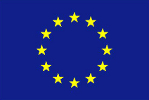

Funded by the European Union
EU project
PEOPLE, MARIE CURIE ACTIONSMarie Curie Industry-Academia Partnerships and Pathways (IAPP)
Call: FP7-PEOPLE-2011-IAPP
Title: Smart Technologies for Transport Safety - Innovation Cluster Nesting (Smart-Nest)
Keywords: structural safety, adaptive structures, smart technologies, adaptive impact absorption, structural health monitoring, structural optimization, structural control, smart systems
Time frame: 1.01.2012 - 31.12.2015 (48 months)
List of participants
- IPPT Institute of Fundament Technologic Research, Poland,
Prof. Jan Holnicki-Szulc holnicki@ippt.pan.pl - ECL Ecole Centrale de Lyon, France
Prof. Mohamed Ichchou - LZPQ Saarland University, Germany
Prof. Christian Boller - ADAPTRONICA, Poland
Dr. Przemyslaw Kolakowski - CEDRAT, France
Dr. Frank Claeyssen - IDEAL, Germany
Dr. Andrey Bulavinov
Objectives of the research programme
The main objective of the project is to establish a vibrant European-level network of SMEs and Academic partners in a new and rapidly emerging research field at the crossroads of structural engineering and smart technologies. The proposed joint research programme,- in terms of the end product, investigates, designs and develops a new class of semi-actively controlled smart structures, which are impact- or vibration-resistant, capable of preserving integrity in critical conditions under unpredictable loads and of post-accident self-diagnosis;
- in terms of the methodology, aims at investigating new, semi-active strategies for optimum structural adaptation, which requires exploring techniques for system identification, modelupdating and load identification;
- in terms of the technology, explores and applies promising smart technologies for (i) semi-active structural control and adaptation and (ii) robust self-diagnosis.
- overcome the fragmentation of competencies and expertise of the participants;
- facilitate intersectoral Academia-Industry mobility and awareness of the involved researchers;
- achieve a critical mass of qualified and motivated researchers in the highly interdisciplinary area of smart technologies for transport safety.
The project is based on in-depth studies in SHM-related techniques for system identification and model updating (WP1) and proceeds to identification and tracking of various types of dynamic loads (WP2), which are prerequisites for the development of optimum strategies for semi-active structural adaptation (WP3). In parallel, relevant smart sensors/actuators (WP4), driving electronics (WP5) and self-diagnosis techniques (WP1) will be pursued. Finally, respective model hardware demonstrators will be implemented and evaluated (WP6).
Work packages
- WP1 Structural Health Monitoring (SHM)
- WP2 Load identification
- WP3 Structural adaptation strategies
- WP4 Smart sensors and actuators
- WP5 Controllers and driving electronics
- WP6 Integrated systems and applications
- WP7 Project management
- WP8 Dissemination and transfer of knowledge
